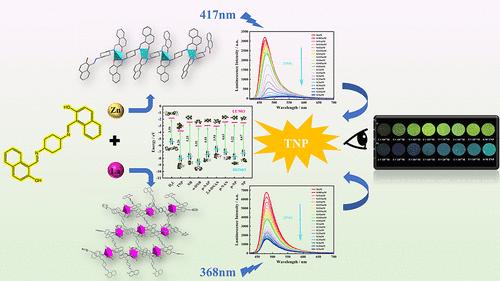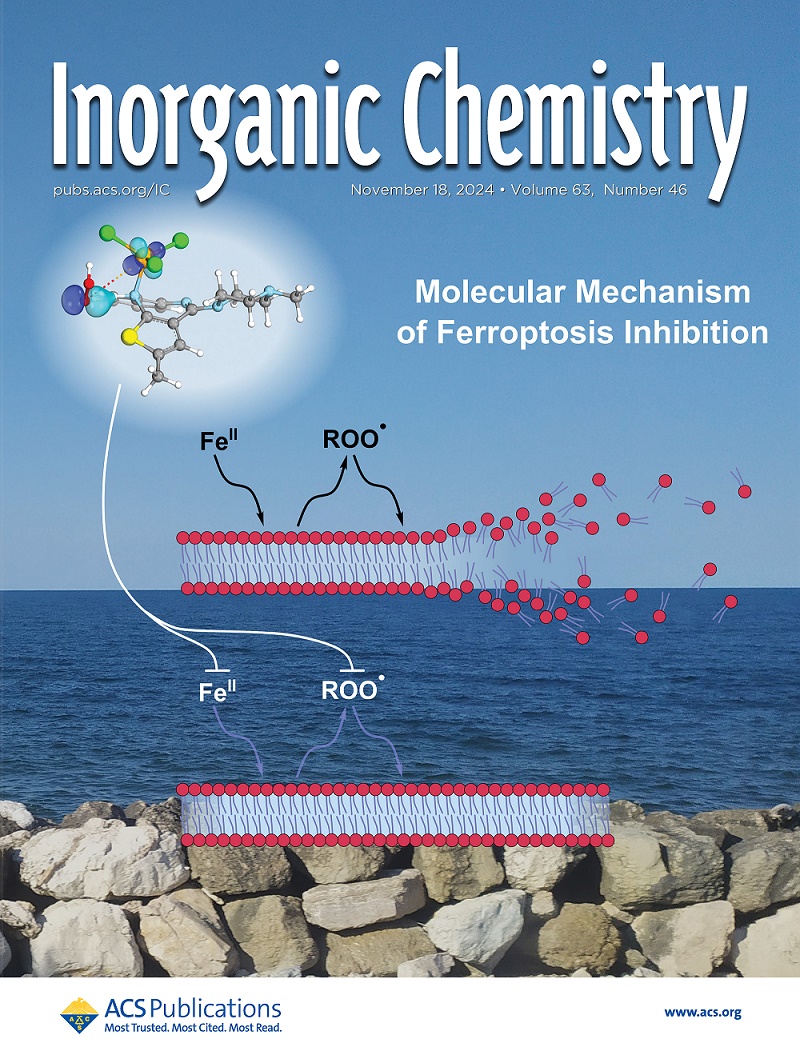Zn(II)/La(III) Coordination Polymers Based on New Schiff Base Ligands for Highly Selective and Sensitive Detection of 2,4,6-Trinitrophenol
IF 4.3
2区 化学
Q1 CHEMISTRY, INORGANIC & NUCLEAR
引用次数: 0
Abstract
In recent years, nitro explosives have posed a threat to national security and human health due to their hazard and environmental contamination. The rapid and effective detection of nitro explosives remains a challenge. In this work, a new Schiff base ligand H2L was carefully designed and successfully synthesized, H2L = 1,1′-((1E,1′E)-(cyclohexane-1,4-diylbis (azanylidene)) bis (methylidene) bis (naphthalene-2-ol). Two new coordination polymers, [Zn2L2]n and [La(NO3)3 (H2L)2CH3OH]n, were constructed by a solvothermal reaction. The aforementioned coordination polymers were characterized by X-ray, PXRD, TGA, and FT-IR, and the results demonstrated that the Zn-CP and the La-CP exhibited a one-dimensional chain structure and a two-dimensional reticular structure. Given the excellent performance of coordination polymers (CPs) in the field of fluorescence analysis and sensing, fluorescence sensing experiments were conducted on nitro explosives. The experimental results demonstrated that Zn-CP exhibited high selectivity and sensitivity for the detection of 2,4,6-trinitrophenol (TNP) by fluorescence quenching, with a detection limit of 4 × 10–6 M. The detection limit of La-CP for TNP was even as low as 0.78 × 10–6 M, and the quenching effect constants KSV were 7.03 × 103 and 1.59 × 104 M–1. Through experimentation and density functional theory calculations, the observed fluorescence quenching can be attributed to three mechanisms: photoinduced electron transfer, resonance energy transfer, and electrostatic interactions between CPs and NACs. Moreover, sensor-coated portable test strip devices were fabricated for easy and rapid on-site detection of the TNP explosive.

求助全文
约1分钟内获得全文
求助全文
来源期刊

Inorganic Chemistry
化学-无机化学与核化学
CiteScore
7.60
自引率
13.00%
发文量
1960
审稿时长
1.9 months
期刊介绍:
Inorganic Chemistry publishes fundamental studies in all phases of inorganic chemistry. Coverage includes experimental and theoretical reports on quantitative studies of structure and thermodynamics, kinetics, mechanisms of inorganic reactions, bioinorganic chemistry, and relevant aspects of organometallic chemistry, solid-state phenomena, and chemical bonding theory. Emphasis is placed on the synthesis, structure, thermodynamics, reactivity, spectroscopy, and bonding properties of significant new and known compounds.
 求助内容:
求助内容: 应助结果提醒方式:
应助结果提醒方式:


